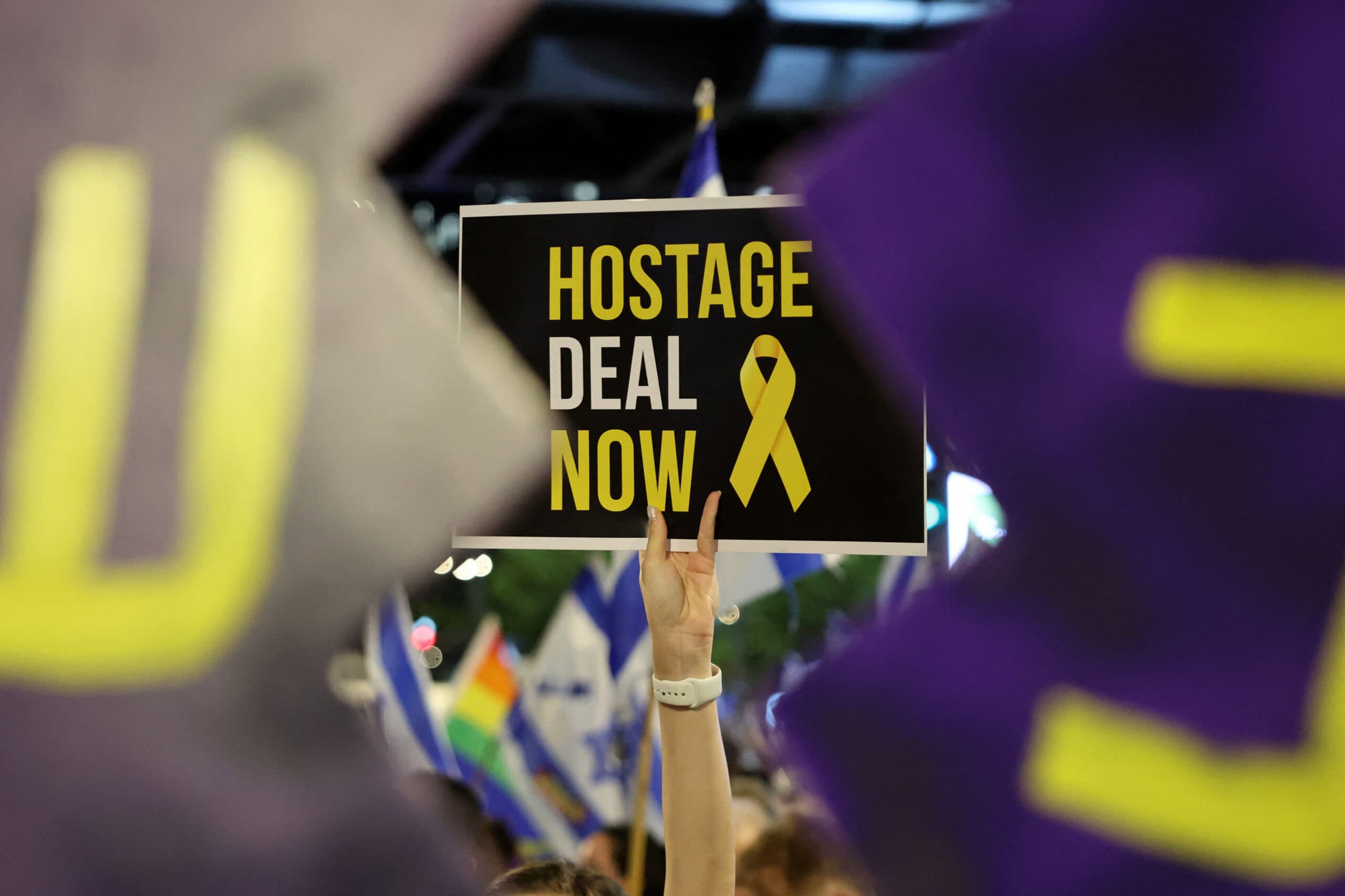As the war in Gaza nears its one-year mark, Israel has severely degraded Hamas’s capabilities.
The spokesperson for Hamas’s military wing said yesterday that Prime Minister Binyamin Netanyahu’s insistence on freeing hostages through military pressure means that they will die. Hamas has suffered significant losses of leadership, personnel, infrastructure and capabilities. The group was also dealt a symbolic blow with the assassination of Ismail Haniyeh, its political chief, and the purported killing of senior military leader Mohammed Deif. It is now exploiting its remaining bargaining chip, the hostages, to pressure Netanyahu to end the war.
Subsidiary Impacts
- Netanyahu’s far-right coalition allies will oppose a ceasefire deal that leaves Hamas standing.
- The Palestinian Authority faces severe economic and security challenges, raising the risk of West Bank instability.
- Having contained a recent escalation in tensions, Hezbollah and Israel will revert to regular exchanges of fire.
- Iran’s president appears to be prioritising the economy, curtailing Tehran’s readiness to take strong retaliatory action against Israel.
Analysis
Netanyahu wants “total victory” over Hamas, which he defines as the destruction of the group’s military and governance capabilities. To that end, Israel is now in its eleventh month of fighting in Gaza, which has resulted in the massive destruction of the territory’s infrastructure.
A World Bank, EU and UN joint assessment estimates that as of January, the war has inflicted damage amounting to around USD18.5bn in the territory. Over four-fifths of that damage lies in two sectors: residential buildings, and commerce, industry and services. The remaining damage is across critical infrastructure relating to education, water, sanitation and hygiene, health, municipal services and transport.
Hamas’s standing
Hamas’s military wing, Al-Qassam Brigade, historically operated independently of the movement’s political and civilian elements. That dynamic is likely now altered after Yehya Sinwar, the group’s leader in Gaza, replaced Haniyeh. Sinwar’s election as political chief will most likely reinforce the hold of Gaza-based Hamas members over the group’s decision-making and confirm its long-term militarisation.
In July, Israel outlined the impact of the war on Hamas’s capabilities:
- The Israeli Defence Forces (IDF) have killed or captured over 14,000 Hamas fighters (out of an estimated 25,000).
- The IDF has eliminated half of the Al-Qassam Brigades’ leadership.
- 20 battalion commanders and 150 company commanders are now dead.
- The IDF has struck more than 37,000 targets from the air and more than 25,000 sites described as Hamas infrastructure and launch sites.
- IDF sources recently suggested that 80% of Hamas tunnels in the Rafah area are destroyed.
- On August 21, Defence Minister Yoav Gallant said Hamas’s last battalion in Rafah was taken apart.
At the end of August, Israel launched an extensive military operation in the West Bank to root out Hamas elements and infrastructure there.
Despite those efforts, Israel has returned to areas that it claims have been cleared from Hamas, suggesting that the group remains active.
Published in August, a joint analysis by CNN, the American Enterprise Institute and the Institute for the Study of War indicates that the group was able to rebuild some of the fighting capabilities of its battalions in northern and central Gaza. According to the assessment, eight Hamas battalions are combat-effective, meaning that they can carry out missions, with those in central Gaza reportedly the least damaged. The analysis further suggests that Hamas retains an ability to reconstitute battalions.
It is difficult to assess how much governing capacity Hamas still holds. The civilian side of the group constitutes the middle class, and like other civilians, suffers Gaza’s destruction. Israel has also targeted the group’s policing capabilities.
Hamas also exists, and remains largely intact, as an organisation operating outside of the Palestinian territories. It exists in the Palestinian camps in Lebanon and has leadership that lives in Qatar and Turkey.
Ceasefire discussions
Washington has been keen to pressure Doha and others to use their influence and leverage over Hamas to soften the group’s negotiating posture. However, this likely neglects the very fine margin of manoeuvre open to Hamas.
Hamas is only likely to concede to a ceasefire agreement that it is confident will eventually become permanent. Without that, Hamas it lose the only bargaining card it has, the hostages, leaving it with an open-ended war with Israel. Moreover, given the sheer scale of the destruction in Gaza and the losses suffered by Palestinians there, Hamas cannot afford to come out from the war empty-handed.
In July, Hamas accepted tentatively a US-backed proposal for a phased ceasefire, seemingly dropping its demand for an initial commitment by Israel to end the war. However, that change is likely linked to guarantees offered by Washington to make the phased ceasefire effectively permanent.
Unity efforts
The role that Hamas would play politically after the war remains unclear.
Palestinian politics is divided despite a recently signed declaration in Beijing obliging factions to work towards national unity. Hamas and Fatah, which dominate in the West Bank and within the Palestinian Authority (PA), have been at loggerheads for 17 years. Past efforts to unite Palestinian parties have floundered on mutual hostility and distrust.
As far as Hamas is concerned, the PA is still too dependent on US funding, especially for its security forces, and thus cannot be trusted. The Beijing Declaration also has no timeline for implementation, further raising scepticism about its chances of success.
Nonetheless, in Beijing, Palestinian factions agreed to establish an ‘interim national reconciliation government’ to rule over Gaza. Washington has also pursued the idea of an empowered and reformed PA to control Gaza. That is because even if Hamas continued to exist after the war, its inclusion in any form of Palestinian governance would be rejected by Israel and would likely hamper efforts to attract reconstruction aid.
The PA is challenged by rising Hamas popularity in the West Bank. In Gaza, the war renders it difficult to conduct any reliable polling, but Israel’s reported efforts to mobilise others to take over civilian roles appear to have yielded limited to no success.
In a situation where Hamas retains a presence on the ground, the likelihood is that Hamas — if not in name, at least in some capacity — may still have a future role in Gaza. It is unlikely to step back and allow the PA, as presently constituted, to take over the territory.
What next?
Israel will persist in its war campaign to degrade Hamas’s capabilities, removing its ability to act as a professional military force and reducing it into a guerrilla army. The group is no longer able to carry out attacks on the scale of October 7, 2023, but it is increasingly likely to revert to organising suicide attacks in Israel. Hamas will put up a strong battle against Israel in the West Bank to protect and retain infrastructure there, distract Israeli forces from Gaza and signal lingering military power.


